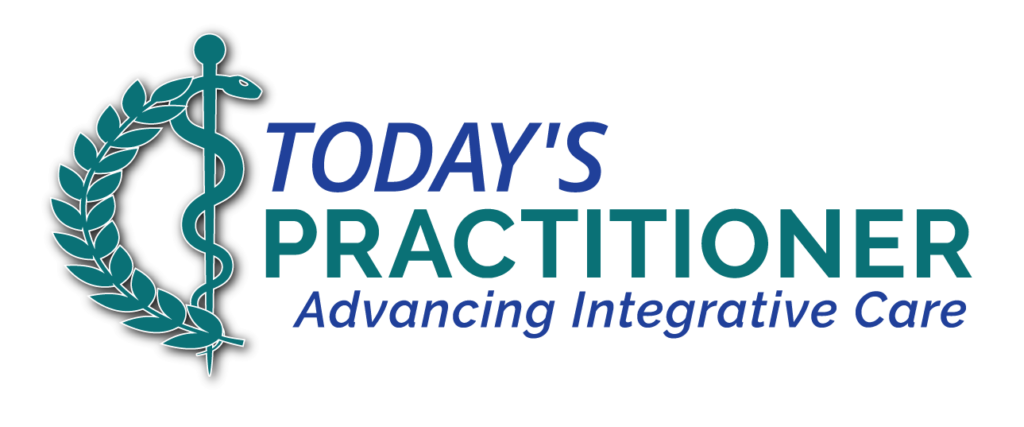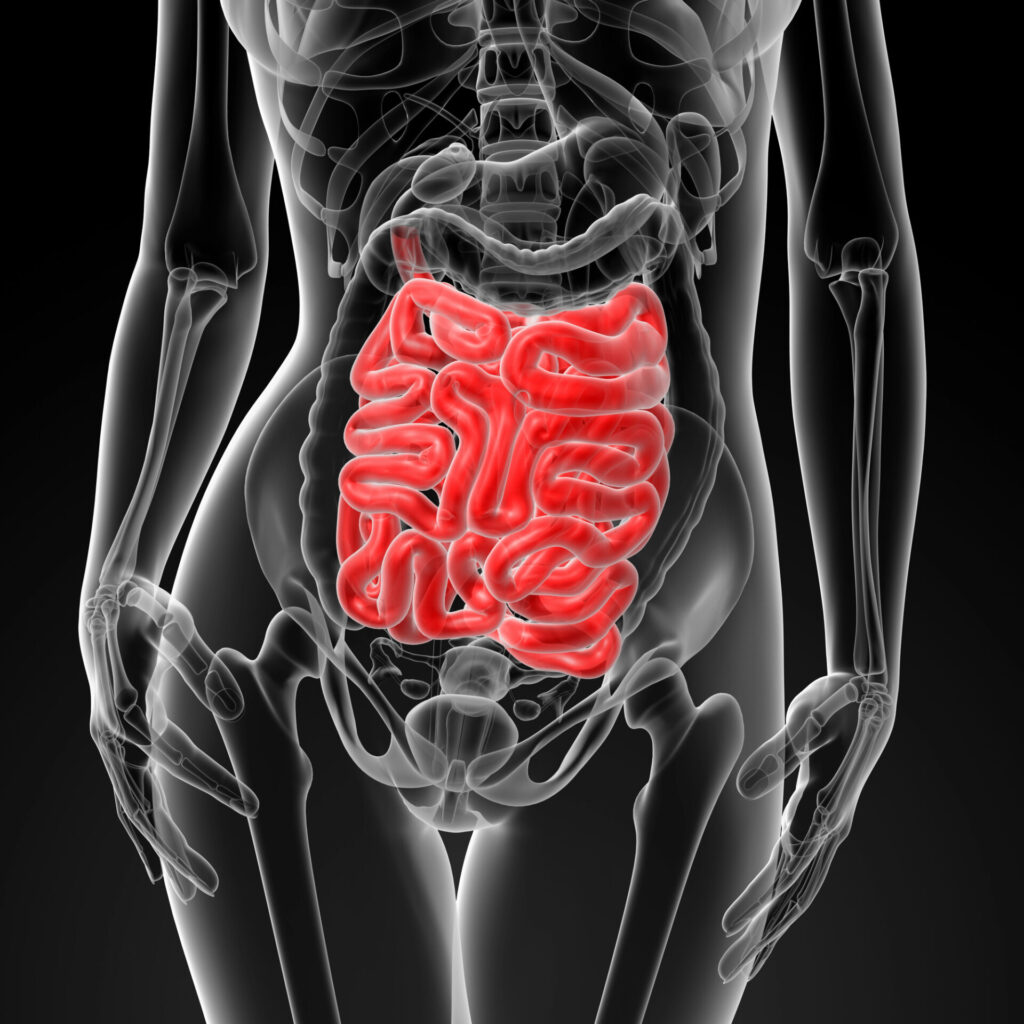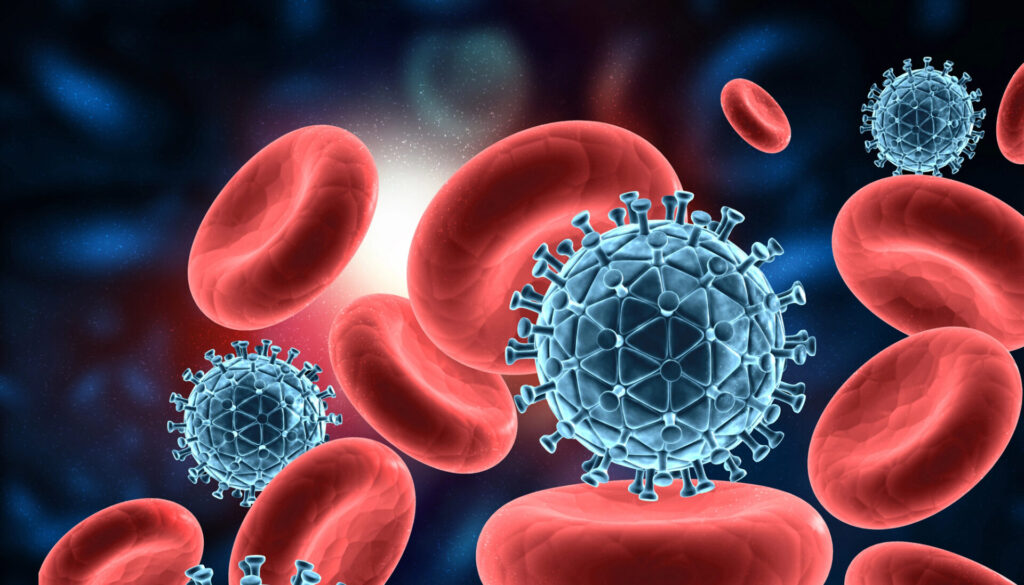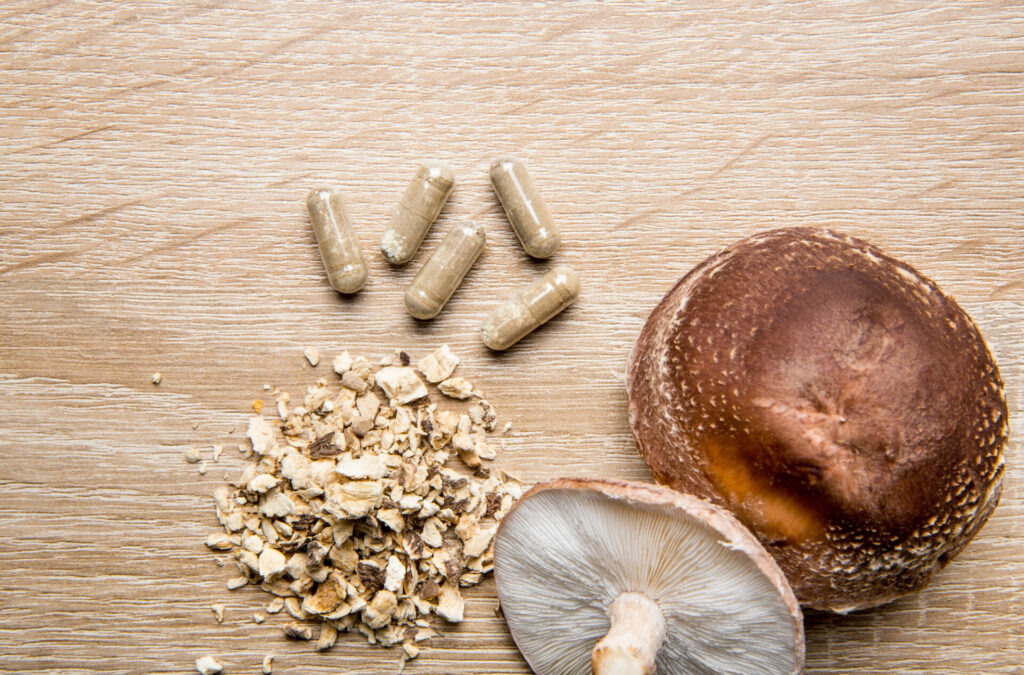Clinicians are becoming more aware of small intestinal bacterial overgrowth (SIBO) as a common culprit of their patients’ GI symptoms. Most clinicians are familiar with antimicrobial regimens for SIBO eradication; however, 44% of patients successfully treated for SIBO with antibiotics experience recurrence within 9 months.1 Therefore, eradication alone may not resolve this problem.
SIBO is a condition that requires understanding the underlying mechanisms of dysfunction predisposing one to SIBO in the first place. When these factors are addressed, SIBO should not relapse, and remission periods are extended. This article will focus on natural therapies for successful SIBO management and long-term prevention.
Brief Introduction to SIBO
The gut microbiome is mainly housed in the large intestine, with a very small population of microbes inhabiting the small intestine. Small intestinal bacterial overgrowth (SIBO) is technically defined as a bacterial population exceeding 103 colony forming units/mL. These organisms produce gases, including hydrogen, hydrogen sulfide, and methane, which are measurable on breath testing.2,3
The overgrowth and gases are associated with many symptoms, including bloating, altered bowel habits, upper GI symptoms, and others. SIBO is not necessarily a true infection, but an overgrowth of normal flora, or sometimes other commensal species that do not normally inhabit the small intestine. Depending on the species present, various functions may be disrupted, resulting in distinct symptoms. For example, certain bacteria deconjugate bile acids, leading to fat malabsorption or bile acid diarrhea. Klebsiella species produce toxins that damage the mucosa, interfering with nutrient absorption and causing diarrhea.4 Intestinal methanogen overgrowth (IMO) slows transit, leading to constipation.5
Eradicating the overgrowth with antibiotics or antimicrobial herbs can certainly reduce the overgrowth and resolve symptoms. However, it’s imperative to work upstream on the root causes that allowed the overgrowth in the first place for long-term success. Otherwise, recurrence is likely and will require repeat testing and treatment.6,7
There are numerous associated conditions and risk factors that can impair normal digestive function, predisposing to SIBO. The website siboinfo.com is a well-researched resource for clinicians wanting to learn more about these factors to help address root causes. Concurrently treating contributing diseases can help prevent SIBO.
Normal Physiology Keeps Overgrowth at Bay
The body is equipped to keep bacterial overgrowth under control. The primary physiologic mechanisms involve proper motility and digestive secretions to regulate bacterial populations in the small intestine. Ninety percent of SIBO cases are due to motility disorders and chronic pancreatitis.8
Immunoglobulins within intestinal secretions also help protect against bacterial overgrowth. Anatomical barriers are important. For example, the ileocecal valve prevents retrograde reflux into the small intestine from the large intestine. Optimizing healthy GI tract physiology is key to preventing SIBO.8
Gastrointestinal Motility
The migrating motor complex (MMC) is part of the enteric nervous system and sends “cleansing waves” throughout the small intestine to sweep bacteria and food debris down and out. The MMC functions in a fasted versus a fed state, and these waves are distinct from peristaltic waves that help move food while eating. When the MMC is damaged or impaired, motility is decreased, and the resulting stagnation creates an environment perfect for harboring bacteria and promoting overgrowth.9,10
Motility dysfunction is associated with an almost 4-fold risk of SIBO compared to normal motility.2
One of the major etiologies of SIBO discovered by Dr. Mark Pimentel and his research group at Cedars-Sinai is that many cases of SIBO begin with gastroenteritis. The post-infectious irritable bowel syndrome (PI-IBS) that ensues may actually be a case of underlying SIBO.3,11,12
A bug picked up during international travel or a bout of food poisoning produced a toxin that effectively crippled the MMC. The infectious organism is not implicated in SIBO, but the resulting disruption to physiology then sets the patient up for SIBO development, typically within a few months after their bout of gastroenteritis. A classic story is that the patient remembers their GI bug and their “gut has never been the same since.”
Diabetes, medications, anatomical abnormalities, hypothyroidism, autoimmune and other conditions interfering with intestinal neuromuscular function are also associated with MMC deficiency.13-18
Digestive Secretions
Stomach acid, pancreatic enzymes, and bile acid all have bacteriostatic and bactericidal effects. Under normal physiologic conditions, secretion of these substances aids in healthy digestion and keeps microbial populations under control. On the contrary, conditions or medications that promote pancreatic insufficiency, hypochlorhydria, or gallbladder dysfunction can impair digestive capacity and lead to bacterial overgrowth.8
Not only can SIBO develop because of deficient digestive secretions, but the bacteria themselves can alter digestive output in a bidirectional relationship. For example, excess bacteria can deconjugate bile salts, resulting in malabsorption of fat and fat-soluble vitamins.8
A Functional Medicine Multiphasic Approach Addresses SIBO’s Root Causes
Since SIBO is a consequence of GI dysfunction, working upstream to address root causes and restore normal GI function should be the treatment focus. The goals and clinical benefits of a comprehensive protocol include microbial balance, optimized digestion, and motility. This comprehensive approach is the best way to achieve lasting remission, and studies show that a comprehensive approach using adjunctive therapies results in greater clinical improvement.19,20
Phase 1: Eradicating Overgrowth and Modulating the Microbiome
Many are familiar with protocols for SIBO eradication, with the antibiotic rifaximin being the most studied. However, many clinicians and patients prefer a more natural approach, and there is evidence that botanical treatments are equivalent to rifaximin, if not superior. Botanical protocols tend to last 4 weeks but may require longer depending on the severity of the overgrowth or the formula used.21,22
A study involving 104 patients with SIBO compared the effects of rifaximin (1200 mg per day) and an herbal formulation, both administered for 4 weeks. The herbal blends included Biotics FC-Cidal and Dysbiocide or Metagenics Candibactin AR and BR. The response rate was 46% for herbal therapies versus 34% for rifaximin. In patients with SIBO refractory to rifaximin, herbal therapies or triple antibiotics (clindamycin 300 mg TID, metronidazole 250 mg TID, neomycin 500 mg TID) were given for 4 additional weeks. SIBO clearance was similar in both rescue therapy groups, with 57.1% with negative breath testing after herbal therapy and 60% after triple antibiotic therapy. Fewer adverse effects were observed in the herbal treatment group compared to rifaximin.22
Another clinical trial on 16 SIBO patients using 10 weeks of Biocidin liquid tincture and GI Detox+ showed negative breath tests in 42.8% of hydrogen-dominant SIBO and 66.7% of hydrogen sulfide-dominant SIBO patients. The botanical regimen also reduced facial erythema and beneficially modulated the microbiome and markers of intestinal permeability.21
Berberine is an extract from plants such as Berberis, Coptis, and Hydrastis, and has many known medicinal properties, including antimicrobial. Berberine is currently being studied in a clinical trial called the BRIEF-SIBO (berberine and rifaximin effects for small intestinal bacterial overgrowth) trial.23 An interim report shows that two weeks of berberine has similar eradication rates as rifaximin with negative breath testing and clinical improvement.24
Compared to antibiotics, herbs tend to have multiple mechanisms of action and, when combined with other herbs, can have a synergistic effect. Many herbs used in the clinical studies are well-documented for their antimicrobial properties, including oil of oregano, thyme, wormwood, yarrow, and horsetail, among others.22,25-32 Herbs tend to have fewer side effects than antibiotics.22
Herbs also possess anti-inflammatory and antioxidant properties, which can benefit gut lining integrity. Herbs such as French tarragon, horsetail, and olive leaf have antimicrobial and anti-biofilm effects.33-36 With a similar response rate compared to antibiotics, a herbal SIBO treatment may be a more appealing option for restoring a healthy bacterial balance and improving gut health.
Another benefit of herbs over antibiotics is the ability to treat multiple microorganisms at once. For example, 34% of SIBO patients have coexisting small intestinal fungal overgrowth (SIFO), and most herbs used to treat SIBO also address fungal overgrowth.37,38 SIFO symptoms overlap with SIBO, and there is no non-invasive test for SIFO; therefore, an herbal regimen that targets both SIBO and SIFO may be a better choice of treatment. Many antibiotic regimens predispose to yeast infections.
Phase 2: Restoring Healthy Digestive Physiology—The Natural Defense Against Bacterial Overgrowth
Perhaps the most important part of the SIBO journey is to address the underlying root causes to prevent relapse. This phase of treatment may last longer than the eradication phase, typically 3 months or longer. Some patients have underlying conditions that cannot be resolved and may therefore require ongoing preventive strategies to extend remission periods.
Strategies for Restoring Motility
Prokinetic agents stimulate and enhance gastrointestinal motility. It’s important to note that prokinetic agents are not laxatives. Prokinetics stimulate the MMC, whereas laxatives do not.39,40 Prescriptive prokinetics have more research for SIBO as compared to herbal, however, many clinicians notice a benefit using herbal prokinetics.
- L-5-Hydroxy-Tryptophan (5-HTP) is the precursor to the neurotransmitter serotonin, which, in the GI tract, modulates intestinal smooth muscle contractile frequency.41,42 5-HTP is also the precursor to 5-hydroxyindole (5-HI), a compound that accelerates GI motility.43 5-HTP is sourced from Griffonia simplicifolia
- Ginger’s (Zingiber officinale) bioactive compounds activate serotonin and muscarinic acetylcholine receptors, accelerating transit and regulating motility throughout the GI tract.44 It stimulates gastric emptying and antral contractions and has been classically used to alleviate nausea.45-47
- Artichoke extract (Cynara scolymus) stimulates bile acid secretion, and when used in combination with ginger, has been shown to promote gastric emptying and improve gastric motility.48-50 Patients with functional dyspepsia (FD) experienced symptom relief in a randomized clinical trial using artichoke and ginger.51 There is a link between FD and SIBO, which both present with overlapping symptoms.52
- Antioxidants and antioxidant enzymes such as superoxide dismutase, catalase, and glutathione are important for preventing oxidative tissue damage. Oxidative stress causes damage to the enteric neurons, resulting in GI dysmotility.53,54
- Nitric oxide (NO) acts as a neurotransmitter influencing motor activity in enteric nerve cells along the GI tract. Decreased production has been associated with motility dysfunction and delayed gastric emptying in humans.55,56 Beet concentrate provides nitrates that promote NO production. Beets also provide antioxidants.57
- Meal spacing every 4-5 hours and an overnight fast promote MMC activity. The MMC is not active during feedings.58
- Stress management is crucial for nervous system balancing. The adage, “rest and digest,” refers to parasympathetic nervous system activity, as opposed to sympathetic dominance in a stressed, “fight or flight” state. Chronic stress decreases GI motility, gut mucosal immunity, and HCl production, and upsets microbial balance, contributing to SIBO.10,59-62
- Address structural issues with manual therapy. Patients with prior abdominopelvic surgeries or trauma may have tissue adhesions, and manual therapy may promote better motility and digestive function.63,64
Strategies for Supporting Digestion
Restoring physiologic levels of digestive compounds creates a more bacteria-resistant environment. It also encourages optimal digestion and absorption of nutrients that may have been affected by microbial imbalances.
- Betaine hydrochloride is a common supplement used for reacidifying the stomach. This provides antimicrobial defenses and promotes improved absorption of pH-dependent nutrients such as vitamin B12 and iron. Gastric juice also contains pepsin, a proteolytic enzyme with antimicrobial properties.65-67 Proton pump inhibitors (PPIs) reduce hydrochloric acid, and a weaning program may be helpful if appropriate. PPI use is an independent risk factor for SIBO and SIFO.2
- Pancreatic enzymes assist in the digestion of lipids, proteins, and carbohydrates, as well as inhibiting bacterial overgrowth. Pancreatic enzyme replacement therapy (PERT) is not effective in all chronic pancreatitis patients, likely due to underlying SIBO. Therefore, it is important to eradicate the overgrowth (phase 1) for PERT to be effective in these patients.68,69
- Bile salts assist in fat emulsification and have bacteriostatic and bactericidal activity against many microbial species, including methane-producing organisms.70,71 A study on 24 patients with SIBO and FD showed a reduction in methane values on breath testing and FD symptoms after supplementing for 2 months with bile acid.72
Address the Root Causes, Prevent SIBO Relapse
Treating the overgrowth is often the easy part, as most clinicians are well-versed in prescribing antimicrobial regimens for infections. Restoring optimal digestive function and treating co-occurring or predisposing conditions is necessary to prevent the vicious cycle of SIBO recurrence. Natural SIBO treatment protocols may require 4 months or longer. Providing support for the “2nd phase” of SIBO treatment may be the missing piece to your long-term success rates with your SIBO patients.
References:
- Lauritano EC, Gabrielli M, Scarpellini E, et al. Small intestinal bacterial overgrowth recurrence after antibiotic therapy. The American journal of gastroenterology. 2008;103(8):2031-2035.
- Jacobs C, Coss Adame E, Attaluri A, Valestin J, Rao SS. Dysmotility and proton pump inhibitor use are independent risk factors for small intestinal bacterial and/or fungal overgrowth. Alimentary pharmacology & therapeutics. 2013;37(11):1103-1111.
- Takakura W, Pimentel M. Small Intestinal Bacterial Overgrowth and Irritable Bowel Syndrome – An Update. Frontiers in psychiatry. 2020;11:664.
- Dukowicz AC, Lacy BE, Levine GM. Small intestinal bacterial overgrowth: a comprehensive review. Gastroenterology & hepatology. 2007;3(2):112-122.
- Mehravar S, Takakura W, Wang J, Pimentel M, Nasser J, Rezaie A. Symptom Profile of Patients With Intestinal Methanogen Overgrowth: A Systematic Review and Meta-analysis. Clinical gastroenterology and hepatology : the official clinical practice journal of the American Gastroenterological Association. 2025;23(7):1111-1122.e1119.
- Rezaie A, Pimentel M, Rao SS. How to Test and Treat Small Intestinal Bacterial Overgrowth: an Evidence-Based Approach. Current gastroenterology reports. 2016;18(2):8.
- Lembo A, Pimentel M, Rao SS, et al. Repeat Treatment With Rifaximin Is Safe and Effective in Patients With Diarrhea-Predominant Irritable Bowel Syndrome. Gastroenterology. 2016;151(6):1113-1121.
- Bures J, Cyrany J, Kohoutova D, et al. Small intestinal bacterial overgrowth syndrome. World journal of gastroenterology : WJG. 2010;16(24):2978-2990.
- Deloose E, Janssen P, Depoortere I, Tack J. The migrating motor complex: control mechanisms and its role in health and disease. Nature reviews Gastroenterology & hepatology. 2012;9(5):271-285.
- Takahashi T. Interdigestive migrating motor complex -its mechanism and clinical importance. Journal of smooth muscle research = Nihon Heikatsukin Gakkai kikanshi. 2013;49:99-111.
- Pimentel M, Morales W, Pokkunuri V, et al. Autoimmunity Links Vinculin to the Pathophysiology of Chronic Functional Bowel Changes Following Campylobacter jejuni Infection in a Rat Model. Digestive diseases and sciences. 2015;60(5):1195-1205.
- Rezaie A, Park SC, Morales W, et al. Assessment of Anti-vinculin and Anti-cytolethal Distending Toxin B Antibodies in Subtypes of Irritable Bowel Syndrome. Digestive diseases and sciences. 2017;62(6):1480-1485.
- Husebye E. The pathogenesis of gastrointestinal bacterial overgrowth. Chemotherapy. 2005;51 Suppl 1:1-22.
- Lauritano EC, Bilotta AL, Gabrielli M, et al. Association between hypothyroidism and small intestinal bacterial overgrowth. The Journal of clinical endocrinology and metabolism. 2007;92(11):4180-4184.
- Pustorino S, Foti M, Calipari G, et al. [Thyroid-intestinal motility interactions summary]. Minerva gastroenterologica e dietologica. 2004;50(4):305-315.
- Dooley CP, el Newihi HM, Zeidler A, Valenzuela JE. Abnormalities of the migrating motor complex in diabetics with autonomic neuropathy and diarrhea. Scandinavian journal of gastroenterology. 1988;23(2):217-223.
- Jonderko K, Kwiecień J, Kasicka-Jonderko A, Buschhaus M. The effect of drugs and stimulants on gastric myoelectrical activity. Przeglad gastroenterologiczny. 2014;9(3):130-135.
- Ghoshal UC, Shukla R, Ghoshal U. Small Intestinal Bacterial Overgrowth and Irritable Bowel Syndrome: A Bridge between Functional Organic Dichotomy. Gut and liver. 2017;11(2):196-208.
- Martyniak A, Wójcicka M, Rogatko I, Piskorz T, Tomasik PJ. A Comprehensive Review of the Usefulness of Prebiotics, Probiotics, and Postbiotics in the Diagnosis and Treatment of Small Intestine Bacterial Overgrowth. Microorganisms. 2025;13(1).
- Redondo-Cuevas L, Belloch L, Martín-Carbonell V, et al. Do Herbal Supplements and Probiotics Complement Antibiotics and Diet in the Management of SIBO? A Randomized Clinical Trial. Nutrients. 2024;16(7).
- Min M, Nadora D, Chakkalakal M, et al. An Oral Botanical Supplement Improves Small Intestinal Bacterial Overgrowth (SIBO) and Facial Redness: Results of an Open-Label Clinical Study. Nutrients. 2024;16(18).
- Chedid V, Dhalla S, Clarke JO, et al. Herbal therapy is equivalent to rifaximin for the treatment of small intestinal bacterial overgrowth. Global advances in health and medicine : improving healthcare outcomes worldwide. 2014;3(3):16-24.
- Guo H, Lu S, Zhang J, et al. Berberine and rifaximin effects on small intestinal bacterial overgrowth: Study protocol for an investigator-initiated, double-arm, open-label, randomized clinical trial (BRIEF-SIBO study). Frontiers in pharmacology. 2023;14:1121435.
- Duan L-P, Guo H-Z, Gao J, Lu S-Q, Zhu L, Chen Y. Mo1922 BERBERINE IS NOT INFERIOR TO RIFAXIMIN IN TREATMENT OF SMALL INTESTINAL BACTERIAL OVERGROWTH: AN INTERIM ANALYSIS OF THE BRIEF-SIBO RCT STUDY. Gastroenterology. 2024;166(5):S-1174.
- Saeed S, Tariq P. Antibacterial activity of oregano (Origanum vulgare Linn.) against gram positive bacteria. Pakistan journal of pharmaceutical sciences. 2009;22(4):421-424.
- Ghitea TC, El-Kharoubi A, Ganea M, et al. The Antimicrobial Activity of Origanum vulgare L. Correlated with the Gastrointestinal Perturbation in Patients with Metabolic Syndrome. Molecules (Basel, Switzerland). 2021;26(2).
- Soltani S, Shakeri A, Iranshahi M, Boozari M. A Review of the Phytochemistry and Antimicrobial Properties of Origanum vulgare L. and Subspecies. Iranian journal of pharmaceutical research : IJPR. 2021;20(2):268-285.
- Sakkas H, Papadopoulou C. Antimicrobial Activity of Basil, Oregano, and Thyme Essential Oils. Journal of microbiology and biotechnology. 2017;27(3):429-438.
- Candan F, Unlu M, Tepe B, et al. Antioxidant and antimicrobial activity of the essential oil and methanol extracts of Achillea millefolium subsp. millefolium Afan. (Asteraceae). Journal of ethnopharmacology. 2003;87(2-3):215-220.
- Juteau F, Jerkovic I, Masotti V, et al. Composition and antimicrobial activity of the essential oil of Artemisia absinthium from Croatia and France. Planta medica. 2003;69(2):158-161.
- Radulović N, Stojanović G, Palić R. Composition and antimicrobial activity of Equisetum arvense L. essential oil. Phytotherapy research : PTR. 2006;20(1):85-88.
- Wylie MR, Merrell DS. The Antimicrobial Potential of the Neem Tree Azadirachta indica. Frontiers in pharmacology. 2022;13:891535.
- El-Sayed NR, Samir R, Jamil MA-HL, Ramadan MA. Olive Leaf Extract Modulates Quorum Sensing Genes and Biofilm Formation in Multi-Drug Resistant Pseudomonas aeruginosa. Antibiotics (Basel, Switzerland). 2020;9(9).
- Mohammadi Pelarti S, Karimi Zarehshuran L, Babaeekhou L, Ghane M. Antibacterial, anti-biofilm and anti-quorum sensing activities of Artemisia dracunculus essential oil (EO): a study against Salmonella enterica serovar Typhimurium and Staphylococcus aureus. Archives of microbiology. 2021;203(4):1529-1537.
- Gründemann C, Lengen K, Sauer B, Garcia-Käufer M, Zehl M, Huber R. Equisetum arvense (common horsetail) modulates the function of inflammatory immunocompetent cells. BMC complementary and alternative medicine. 2014;14:283.
- Zhang J, Hunto ST, Yang Y, Lee J, Cho JY. Tabebuia impetiginosa: A Comprehensive Review on Traditional Uses, Phytochemistry, and Immunopharmacological Properties. Molecules (Basel, Switzerland). 2020;25(18).
- Soliman N, Kruithoff C, San Valentin EM, Gamal A, McCormick TS, Ghannoum M. Small Intestinal Bacterial and Fungal Overgrowth: Health Implications and Management Perspectives. Nutrients. 2025;17(8).
- Fernandes L, Costa R, Silva S, Henriques M, Costa-de-Oliveira S, Rodrigues ME. Effect of Vapor-Phase Oregano Essential Oil on Resistant Candida Species Biofilms: Mechanisms of Action. Microbiology spectrum. 2023;11(2):e0512422.
- Zhao Q, Chen YY, Xu DQ, et al. Action Mode of Gut Motility, Fluid and Electrolyte Transport in Chronic Constipation. Frontiers in pharmacology. 2021;12:630249.
- Bharucha AE, Lacy BE. Mechanisms, Evaluation, and Management of Chronic Constipation. Gastroenterology. 2020;158(5):1232-1249.e1233.
- Keating DJ, Spencer NJ. What is the role of endogenous gut serotonin in the control of gastrointestinal motility? Pharmacological research : the official journal of the Italian Pharmacological Society. 2019;140:50-55.
- Najjar SA, Hung LY, Margolis KG. Serotonergic Control of Gastrointestinal Development, Motility, and Inflammation. Comprehensive Physiology. 2023;13(3):4851-4868.
- Waclawiková B, Bullock A, Schwalbe M, et al. Gut bacteria-derived 5-hydroxyindole is a potent stimulant of intestinal motility via its action on L-type calcium channels. PLoS biology. 2021;19(1):e3001070.
- Abidi C, Rtibi K, Boutahiri S, et al. Dose-dependent Action of Zingiber officinale on Colonic Dysmotility and Ex Vivo Spontaneous Intestinal Contraction Modulation. Dose-response : a publication of International Hormesis Society. 2022;20(3):15593258221127556.
- Wu KL, Rayner CK, Chuah SK, et al. Effects of ginger on gastric emptying and motility in healthy humans. European journal of gastroenterology & hepatology. 2008;20(5):436-440.
- Hu ML, Rayner CK, Wu KL, et al. Effect of ginger on gastric motility and symptoms of functional dyspepsia. World journal of gastroenterology : WJG. 2011;17(1):105-110.
- Ernst E, Pittler MH. Efficacy of ginger for nausea and vomiting: a systematic review of randomized clinical trials. British journal of anaesthesia. 2000;84(3):367-371.
- Olas B. An Overview of the Versatility of the Parts of the Globe Artichoke (Cynara scolymus L.), Its By-Products and Dietary Supplements. Nutrients. 2024;16(5).
- Kirchhoff R, Beckers C, Kirchhoff GM, Trinczek-Gärtner H, Petrowicz O, Reimann HJ. Increase in choleresis by means of artichoke extract. Phytomedicine : international journal of phytotherapy and phytopharmacology. 1994;1(2):107-115.
- Lazzini S, Polinelli W, Riva A, Morazzoni P, Bombardelli E. The effect of ginger (Zingiber officinalis) and artichoke (Cynara cardunculus) extract supplementation on gastric motility: a pilot randomized study in healthy volunteers. European review for medical and pharmacological sciences. 2016;20(1):146-149.
- Giacosa A, Guido D, Grassi M, et al. The Effect of Ginger (Zingiber officinalis) and Artichoke (Cynara cardunculus) Extract Supplementation on Functional Dyspepsia: A Randomised, Double-Blind, and Placebo-Controlled Clinical Trial. Evidence-based complementary and alternative medicine : eCAM. 2015;2015:915087.
- Gurusamy SR, Shah A, Talley NJ, et al. Small Intestinal Bacterial Overgrowth in Functional Dyspepsia: A Systematic Review and Meta-Analysis. The American journal of gastroenterology. 2021;116(5):935-942.
- Stavely R, Ott LC, Rashidi N, Sakkal S, Nurgali K. The Oxidative Stress and Nervous Distress Connection in Gastrointestinal Disorders. Biomolecules. 2023;13(11).
- Stavely R, Ott LC, Sahakian L, Rashidi N, Sakkal S, Nurgali K. Oxidative Stress and Neural Dysfunction in Gastrointestinal Diseases: Can Stem Cells Offer a Solution? Stem cells translational medicine. 2023;12(12):801-810.
- Sanders KM, Ward SM. Nitric oxide and its role as a non-adrenergic, non-cholinergic inhibitory neurotransmitter in the gastrointestinal tract. British journal of pharmacology. 2019;176(2):212-227.
- Idrizaj E, Traini C, Vannucchi MG, Baccari MC. Nitric Oxide: From Gastric Motility to Gastric Dysmotility. International journal of molecular sciences. 2021;22(18).
- Clifford T, Howatson G, West DJ, Stevenson EJ. The potential benefits of red beetroot supplementation in health and disease. Nutrients. 2015;7(4):2801-2822.
- Sandberg-Lewis SS, A. SIBO: Dysbiosis Has A New Name. Townsend Letter. 2015(Feb/March 2015).
- Galland L. The gut microbiome and the brain. Journal of medicinal food. 2014;17(12):1261-1272.
- Esplugues JV, Barrachina MD, Beltrán B, Calatayud S, Whittle BJ, Moncada S. Inhibition of gastric acid secretion by stress: a protective reflex mediated by cerebral nitric oxide. Proceedings of the National Academy of Sciences of the United States of America. 1996;93(25):14839-14844.
- Wang SX, Wu WC. Effects of psychological stress on small intestinal motility and bacteria and mucosa in mice. World journal of gastroenterology : WJG. 2005;11(13):2016-2021.
- Leigh SJ, Uhlig F, Wilmes L, et al. The impact of acute and chronic stress on gastrointestinal physiology and function: a microbiota-gut-brain axis perspective. The Journal of physiology. 2023;601(20):4491-4538.
- Rice AD, Patterson K, Reed ED, et al. Treating Small Bowel Obstruction with a Manual Physical Therapy: A Prospective Efficacy Study. BioMed research international. 2016;2016:7610387.
- Rice AD, Patterson K, Reed ED, et al. Decreasing recurrent bowel obstructions, improving quality of life with physiotherapy: Controlled study. World journal of gastroenterology : WJG. 2018;24(19):2108-2119.
- Guilliams TG, Drake LE. Meal-Time Supplementation with Betaine HCl for Functional Hypochlorhydria: What is the Evidence? Integrative medicine (Encinitas, Calif). 2020;19(1):32-36.
- Taylor L, McCaddon A, Wolffenbuttel BHR. Creating a Framework for Treating Autoimmune Gastritis-The Case for Replacing Lost Acid. Nutrients. 2024;16(5).
- Schreiber S, Bücker R, Groll C, et al. Gastric antibacterial efficiency is different for pepsin A and C. Archives of microbiology. 2006;184(5):335-340.
- Lee AA, Baker JR, Wamsteker EJ, Saad R, DiMagno MJ. Small Intestinal Bacterial Overgrowth Is Common in Chronic Pancreatitis and Associates With Diabetes, Chronic Pancreatitis Severity, Low Zinc Levels, and Opiate Use. The American journal of gastroenterology. 2019;114(7):1163-1171.
- Gubergrits NB, Linevskiy YV, Lukashevich GM, Fomenko PG, Moroz TV, Mishra T. Morphological and functional alterations of small intestine in chronic pancreatitis. JOP : Journal of the pancreas. 2012;13(5):519-528.
- Florin TH, Woods HJ. Inhibition of methanogenesis by human bile. Gut. 1995;37(3):418-421.
- An C, Chon H, Ku W, et al. Bile Acids: Major Regulator of the Gut Microbiome. Microorganisms. 2022;10(9).
- Kim BT, Kim KM, Kim KN. The Effect of Ursodeoxycholic Acid on Small Intestinal Bacterial Overgrowth in Patients with Functional Dyspepsia: A Pilot Randomized Controlled Trial. Nutrients. 2020;12(5).





